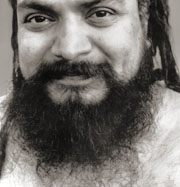The Timeless and Historical
Yoga Vasishta
Shivabalayogi said that Rama lived about ten thousand years ago. In some traditions, Rama is said to have lived during the Treta Yuga, the Age of Silver, which some calculate to have lasted over a million years.
We are now in the Kali Yuga, the dark Age of Iron, which lasts almost a half a million years. In between Treta Yuga and Kali Yuga was the Dvapara Yoga, the Age of Bronze, which lasted over three-quarters of a million years — by some counts.
The subject of the book may be exceedingly ancient, but the book itself is set in medieval India. Yoga Vasishta is generally believed to have been written down in India some time between the 11th and 14th centuries of the modern era, only seven or ten centuries ago. Yoga Vasishta makes references to various schools of Indian philosophy prevalent in medieval India as well as references to Buddhism and Christianity (resurrection at the Second Coming). These references establish that it must have been compiled in historical times.
The original Sage Vasishta is a muni, an ancient yogi, who was born from the mind of Brahma, the aspect of God that is the Creator. As Mitra explains in the forward to his translation (see The Historical Vasishta), Vasishta is also the name of a family or class of brahmin priests who served royalty in India for centuries.
The original Sage Valmiki, to whom the writing of Yoga Vasishta is attributed, is also a yogi of ancient times. Valmiki is also the name under which another great work of ancient India was written, the Ramayana, the 24,000 sloka epic of the life of Rama. The written Ramayana dates back to the last centuries before the modern era.
Ascribing the work to the traditional and legendary Rama, Vasishta and Valmiki makes it clear that Yoga Vasishta claims roots in very ancient times even though compiled in historical times.
Because the written Yoga Vasishta and Ramayana are much more recent than the traditional dates for the events they describe, there is no need to believe that the original Vasishta or the original Valmiki actually wrote the versions we have now. To account for the ancient roots of Yoga Vasishta, one may imagine that (a) very ancient texts that were available to the medieval scribes have since been lost, or (b) it is an oral, yogic tradition compiled and written down in medieval times, or (c) the text was written through the inherent powers of a yogi who "saw" or "heard" and recorded the dialogues between Vasishta and Rama that took place many, many millennia earlier. Or all three sources contributed to the work we now have.
Yoga Vasishta itself teaches that time and space do not really exist, and even Sage Vasishta and Sage Valmiki, the original ones, have incarnated as themselves many times over.
Then there are the brahmins, the hereditary class of priests and intellectuals in medieval India who claimed the highest rank in society. Contributors to Yoga Vasishta necessarily included brahmins and scribes. They were employed in the service of royalty and the book was compiled and recorded by brahmins through patronage for the purpose of teaching princes how to live and rule. Yoga Vasishta abounds in stories of enlightened rulers, the wars they waged, and the lands they ruled. Tellingly, it constantly praises the brahmin caste and encourages the royal caste to donate generously to all brahmins.
Elements of the style and context of Yoga Vasishta are dated. It includes brahmin social values are that have nothing to do with enlightenment or yogis. But even with its brahmin gloss (which actually is a small part of the book), the content is clearly and overwhelmingly timeless and universal — that we create our own reality.
![]()

